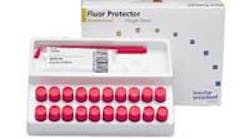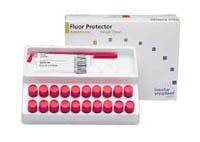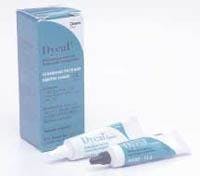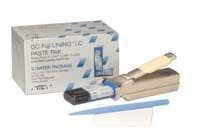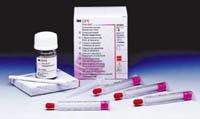By Randy S. Weiner, DMD, FAGD, FACD, FPFA
In 1991, Gordon Christensen wrote, "The subject of bases and liners is confusing; state-of-the-art use varies enormously, many different procedures are successful, and unanimity of opinion is not likely to be achieved soon." Five years later another article showed that this situation had not changed. This paper reported the results of a survey of dental schools and concluded that there was no one correct material or protocol with respect to a liner or base.
Making matters more confusing is the fact that, for some manufacturers, terminology is a problem. Some use the word "cement" in the name of their product, even though it is not a luting agent. Even browsing through dental supply catalogs, one can see that there is confusion among what constitutes a liner or a base.
Why do we use these materials? In the not-too-distant past, it was believed that postoperative sensitivity from restorative procedures was due to the toxic effects of the materials used. However, it is now believed that postoperative pulpal inflammation is caused by the influx of bacteria and related toxins in to the pulp.
We refer to this influx as microleakage, and it is one of the major obstacles that restorative dentists must overcome. Microleakage leads to secondary caries, marginal discoloration, and marginal gap/fracture and therefore, a majority of failed restorations.
Microleakage occurs at the interface between the restoration and the cavity preparation. Reduction of this microleakage via an improved seal will reduce the number of failed restorations and therefore, the need to replace them. One method to achieve this reduction in microleakage and improved seal is accomplished with the use of materials referred to as liners and bases.
The material that the clinician chooses to use is based not only on his or her past experiences, but also on the clinical situation at hand, especially with respect to the amount of remaining tooth structure. In terms of pulpal health, it is more beneficial to conserve tooth structure whenever possible than to remove that same tooth structure and replace it with a restorative material. Clinicians must remember that an intact smear layer seals the dentinal tubules. However, when it comes to adhesive dentistry, the smear layer is removed, which requires the operator to consider pulpal protection.
Liners are defined as materials that are placed as thin (0.5 mm) coatings under a restoration. They are used to provide a barrier to chemical irritants and to reduce microleakage. Liners do not have the sufficient thickness, hardness, or strength to be used alone in a deep cavity, nor should they be used to achieve thermal protection or as a buildup material in a cavity preparation.
In comparison, a base not only provides a barrier to chemical irritation, but can also provide thermal insulation. In addition, bases can be shaped and contoured, and can resist the forces applied during condensation of a restorative material. Bases can be considered as restorative substitutes for the dentin that was removed either by decay or by cavity preparation. In fact, they encourage the recovery of the injured pulp.
There are a number of products available to the clinician that can be used to obtain this seal. The following section discusses these liners and bases and gives some examples of them, but the reader should understand that the examples do not constitute a complete list.
Varnishes (Copalite, Cooley & Cooley) are liquids that are placed on the dentin. They seal the dentin by having the solvent evaporate after placement and allowing the solute to remain, thus occluding the tubules. The solvent can be composed of acetone, chloroform, or ether. When placed under amalgam, the varnish will eventually dissolve and be replaced with the corrosion by-products of the amalgam restoration. Any remaining varnish embedded with the dentin will aid in reducing the discoloration in the tooth structure associated with amalgam restorations.
A type of varnish containing fluoride is also available (Fluor Protector, Ivoclar Vivadent (pictured below); Duraphat, Colgate Oral Pharmaceuticals). However, these are only approved (by the FDA) for use as a treatment for sensitive teeth, not for caries prevention — this despite studies from Europe that show caries reduction rates ranging from 18 to 77 percent when a fluoride varnish is used.
Varnishes are usually applied with a cotton pellet or similar applicator in two thin layers. Each layer should be allowed to thoroughly dry before the next layer is added. Several thin layers are more protective than one thick layer.
It is generally believed that a varnish should not be placed in a cavity restoration that will receive a composite resin restoration, because occluding the dentinal tubules with a varnish will inhibit the adhesion of the composite to the tooth.
Another material that reduces bacterial infiltration into the pulp is calcium hydroxide (CH). It does this in two ways, both of which are dependent on the fact that CH has a pH of about 11. The pH makes the material slightly basic and therefore, will be a slight irritant. This causes the formation of reparative dentin. The second advantage of calcium hydroxide's pH is that it neutralizes the acidity of the bacterial by-products.
Calcium hydroxide has some other advantageous characteristics, one of which is its availability in both self-cured (Dycal, Dentsply Caulk, pictured above) and light-cured (Prisma VLC, Dentsply Caulk) formulations. Another, owing to its pH, is that it is ideal for placement under zinc phosphate (when used as a base), since it will counter the acidity of the zinc phosphate. In contrast, it's disadvantage is that it is highly soluble in the mouth. For this reason, care must be taken so that it is not placed on the margin of the preparation. Also, Schuurs et el write that even though a dentin bridge is formed when CH is placed as liner, the pulp will eventually undergo necrosis due to microleakage.
Calcium hydroxide is ready to place in the cavity preparation, when after mixing, a uniform color is achieved.
Glass ionomers are currently very popular products and have been available for more than 30 years. Glass ionomers offer two attributes that are attractive to the clinician — its ability to bond (ionically) to the tooth structure, and its ability to release fluoride. Both of these factors make this material ideal for sealing the cavity preparation and reducing microleakage. However, they should not be used as pulp-capping agents since GIs do not promote the formation of dentin bridges.
It has been shown that the fluoride released from GI can be replaced. The most effective medium is via a gel, although toothpaste and mouth rinses are also effective. This is important because, when GI is used as a liner and brought to the cavosurface margin (sandwich technique), the fluoride in the GI can be replenished.
Glass ionomers that are to be used as a liner are available in both chemical-cured (Ketacbond, 3M ESPE) and light-cured (Vitrebond, 3M ESPE) formulations as well as hand-mixed (Vitrebond) and encapsulated dispensers (Fuji Lining LC, GC America, shown below).
However, glass ionomers are not without their disadvantages. They are extremely moisture-sensitive. In fact, when a GI comes in contact with water, a reduction in its physical properties is seen. When a resin-modified glass ionomer (Vitrebond) comes into contact with water, the material will expand.
One can obtain a more effective bond of the GI to the tooth if the cavity preparation is cleansed first. This cleansing can be achieved by placing an acidic conditioner followed by a solution of ferric chloride on the preparation. The cleansing removes the smear layer and the ferric chloride increases the ionic bond between the GI and the tooth.
With the increase in popularity of adhesive dentistry, resins are being promoted for use as cavity liners. These resins are referred to as flowable composites and are available in varying shades and viscosities. Flowable composites (aka modified hybrid resin) have a reduced filler load which gives them a better ability to adapt to the cavity preparation, thus reducing microleakage. Resins have high tensile and compressive strengths and low solubility.
Clinicians should keep in mind that resins usually are not in direct contact with the dentin. There is a layer of either the primer/conditioner and/or unfilled resin placed in the cavity prior to the flowable composite. It is these materials that should be evaluated with respect to reducing microleakage. Examples of flowable composites include Uniflow (GC America) and Tetric Flow (Ivoclar Vivadent), while examples of dentin bonding agents are Clearfil SE (Kuraray America) and Fuji Bond LC (GC America).
With respect to both light-cured glass ionomers and resins, the operator should remember that these materials are light-sensitive. Therefore, they should not be dispensed before they are needed and, when they are, should be protected from ambient light. Recently, different types of curing lights (fast halogen, plasma arc, laser) have come on the market. It has been reported that these types of lights may not adequately polymerize all current resin products. Therefore, before material is placed in the tooth, clinicians should confirm that the curing light used actually cures the restorative material.
In situations that involve a deep cavity preparation, placement of a liner only under a final restoration may not be enough. In this scenario, another material (zinc oxide eugenol, zinc phosphate, zinc polycarboxylate, glass ionomer, or resin) is placed on top of the liner. These products are considered basing materials.
Although glass ionomers and resins are usually not used as a base, they do meet some of the requirements of a base — they can provide a thick layer between the floor or the cavity preparation and the final restoration, they can be shaped and contoured, and they can provide a barrier against microleakage. When they are used, they are considered a core buildup material and are marketed as such. Examples of these glass ionomer products include Fuji II LC (GC America) and Ketac Silver (3M ESPE). Examples of resin products are Paracore (Coltene Whaledent) and Luxacore (Zenith/DMG).
Zinc oxide eugenol (ZOE) products such as Intermediate Restorative Material from Denstply Caulk are usually considered as short-term restorative material. However, it can be used as basing material, but only if it is allowed to set for at least 24 hours prior to condensation of the amalgam. ZOE is able to provide an excellent seal. It also has antibacterial properties that make it a good obtundent. In fact, the eugenol is an irritant as it can interfere with cellular respiration. The eugenol in the ZOE is extracted from the ZOE when it comes in contact with the water in the dentinal tubules. This irritation leads to the formation of reparative dentin.
Zinc oxyphosphate (ZOP) is a material that has a long history in dentistry. It is an ideal basing material since it can provide thermal insulation, and be shaped and contoured. Since it hardens quickly, amalgam can be placed at the same visit. Although initially acidic, the pH rises to 6.9 within one week.
One drawback to using ZOP (Zinc Cement, Mission White; Fleck's Cement, Mizzy) is that it is exothermic, meaning heat is produced during mixing and causes the material to set rapidly. To counter this, ZOP should be mixed on a cool glass slab with small amounts of the powder added at a time. The mixture should be spatulated over a wide area in order to help dissipate the heat, and the total mixing time should be around 60 to 90 seconds. The cool glass slab not only reduces the heat produced, but allows more powder to be added to the liquid since the setting time is lengthened. This additional powder can provide more desirable properties. Should moisture appear on the glass slab prior to mixing, it should be removed as this shortens the setting time of the material.
ADA Specification #96 requires that there be 20 percent more liquid than needed to combine with the powder in the package, to account for evaporation of the liquid when the bottle is open. This is because the liquid contains water. Should this water be lost, the material becomes less biocompatible (more acidic) and more viscous, so care should be taken to make sure that the material is not dispensed until it is needed.
Early in the 20th century, copper was added to ZOP (Ames' Black Copper cement) due to its antibacterial properties. That product eventually fell out of favor. It has currently been reintroduced as Doc's Best Red Copper (Cooley & Cooley) cement and contains 7% cupric oxide.
Zinc oxyphosphate is similar to zinc polycarboxylate (Durelon, 3M ESPE, pictured below; Hybond zinc polycarboxylate, Shofu), but the significant difference is in the liquid — polyacrylic acid is in the liquid for zinc polycarboxylate (ZPC), whereas the liquid in ZOP contains an aqueous solution of orthophosphoric acid. As with ZOP, the liquid in ZPC is very acidic but neutralizes when mixed with the powder. Since the polyacrylic acid molecule is larger than dentin tubules, it cannot enter the tubules. Therefore, it cannot cause any harm to the tooth.
When ZOP and ZPC are used as a base, the mixture should be as dry as possible. Doing so will reduce the amount of the free liquid available, thus reducing the acidity of the mixture and making it more biocompatible.
As the reader can see, clinicians have a number of choices when it comes to liners and bases. Each has its own advantages and disadvantages. In 1994, Cox and Suzuki suggested that dentists should re-evaluate the liners and bases that they use. Since that time, materials and protocols have changed; therefore, dentists should again re-evaluate their current practices with respect to liners and bases.
Editor's Note: References available upon request.
Dr. Weiner received his DMD degree from Tufts University in 1986. He is a Fellow of the Academy of General Dentistry, the American College of Dentists, and the Pierre Fauchard Academy. He has written many articles and presented numerous lectures in the topic of liners, bases, and cements. He maintains a private practice on family and cosmetic dentistry in Millis, Mass. He can be reached by e-mail at [email protected].
